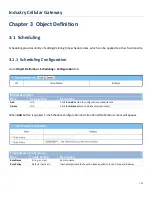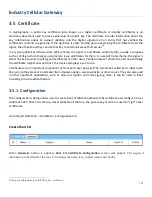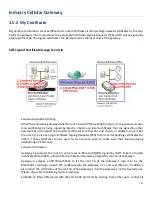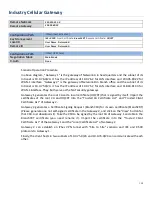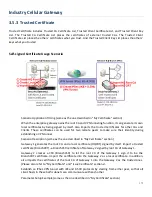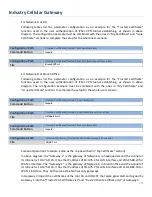
Industry Cellular Gateway
3.5 Certificate
In cryptography, a public key certificate (also known as a digital certificate or identity certificate) is an
electronic document used to prove ownership of a public key. The certificate includes information about the
key, information about its owner's identity, and the digital signature of an entity that has verified the
certificate's contents are genuine. If the signature is valid, and the person examining the certificate trusts the
signer, then they know they can use that key to communicate with its owner
In a typical public-key infrastructure (PKI) scheme, the signer is a certificate authority (CA), usually a company
such as VeriSign which charges customers to issue certificates for them. In a web of trust scheme, the signer is
either the key's owner (a self-signed certificate) or other users ("endorsements") whom the person examining
the certificate might know and trust. The device also plays as a CA role.
Certificates are an important component of Transport Layer Security (TLS, sometimes called by its older name
SSL), where they prevent an attacker from impersonating a secure website or other server. They are also used
in other important applications, such as email encryption and code signing. Here, it can be used in IPSec
tunneling for user authentication.
3.5.1 Configuration
The configuration setting allows user to create Root Certificate Authority (CA) certificate and configure to set
enable of SCEP. Root CA is the top-most certificate of the tree, the private key of which is used to "sign" other
certificates.
Go to Object Definition > Certificate > Configuration tab.
Create Root CA
When
Generate
button is applied,
Root CA Certificate Configuration
screen will appear.
The required
information to be filled for the root CA includes the name, key, subject name and validity.
10 http://en.wikipedia.org/wiki/Public_key_certificate.
162







